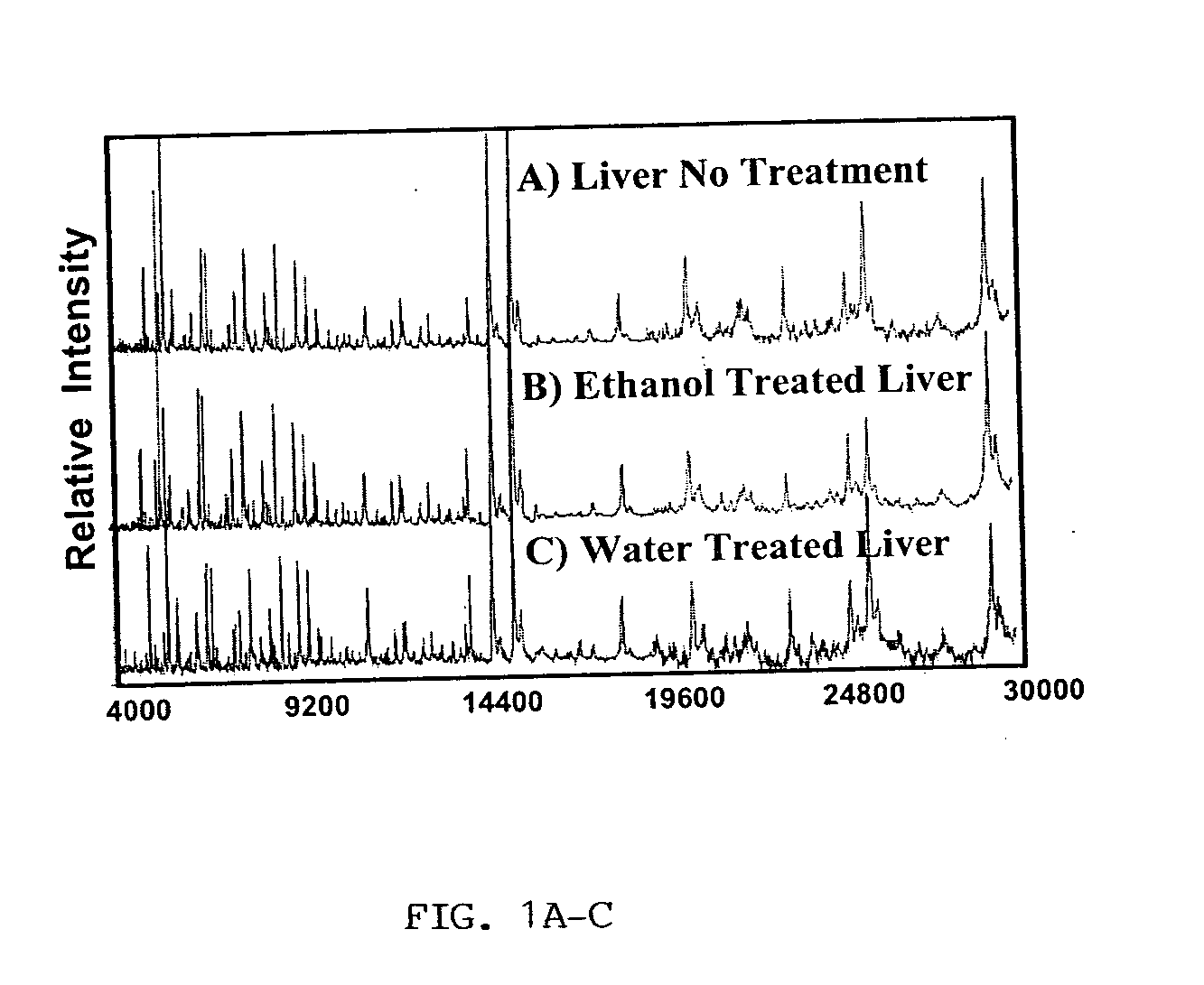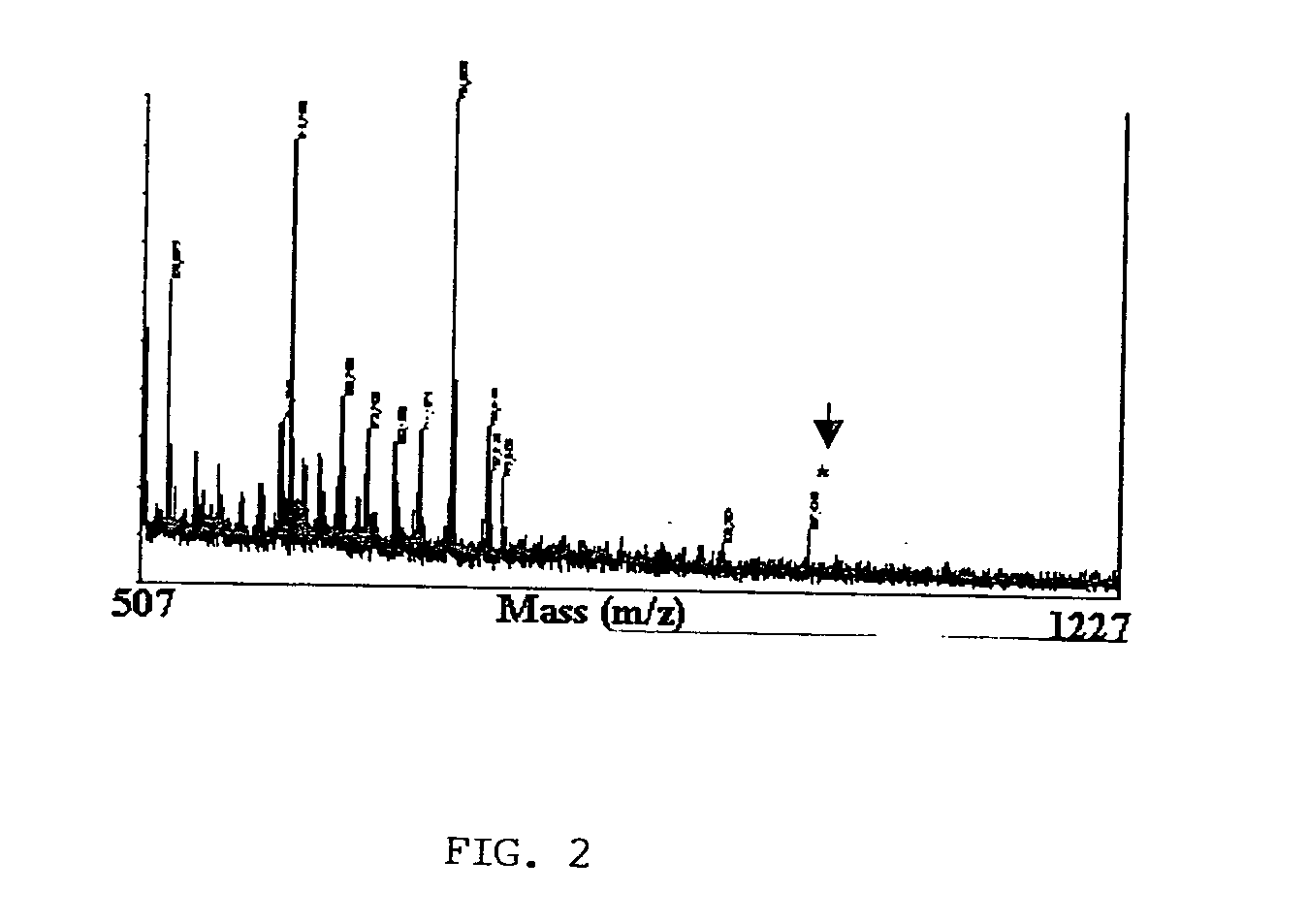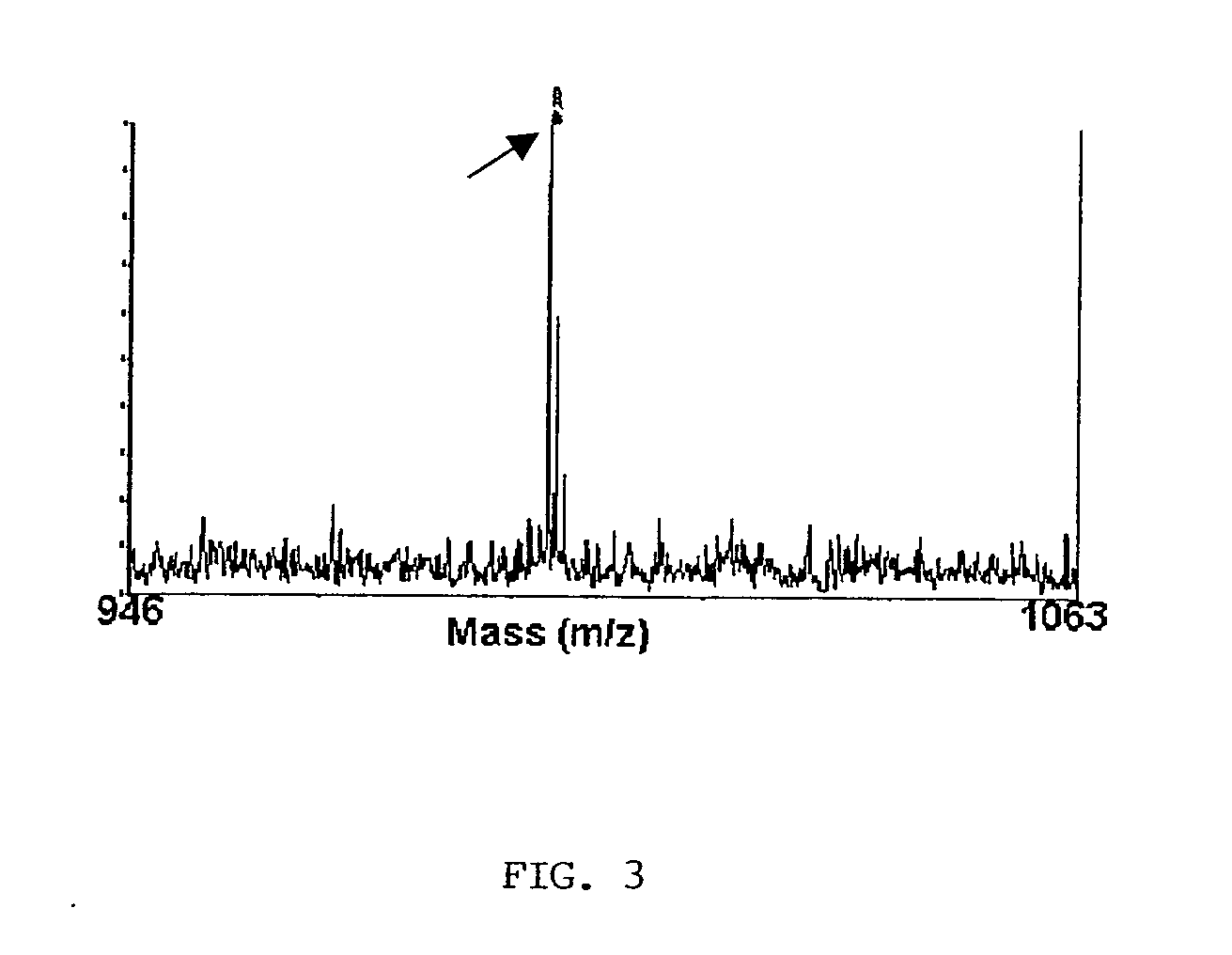Multiplex spatial profiling of gene expression
a gene expression and multi-spatial technology, applied in the field of molecular biology, can solve the problems of other limitations of microarray technology, the efficiency of the number of transcripts that can be simultaneously profiled is unparalleled, and the number of transcripts that can be simultaneously detected is small
- Summary
- Abstract
- Description
- Claims
- Application Information
AI Technical Summary
Benefits of technology
Problems solved by technology
Method used
Image
Examples
example 1
Effects of Tissue Fixation with Ethanol on Mass Spectrometry Analysis
[0259] An important component for the overall success of this proposal is the effectiveness of the tissue processing protocols prior to in situ hybridization and IMS analysis. To accurately reflect the biological conditions present in the tissues of interest, the tissue must be processed appropriately to maintain the integrity of the RNA without a loss to the overall structure of the tissue section, allowing effective detection of the mass probe tags during IMS. Others have published significantly on tissue processing for IMS in breast, colon and prostate tissue samples (Chaurand et al., 2001a; Chaurand et al., 2001b; Masumori et al., 2001; Xu et al., 2002). Additionally, a recent report from Kruse and Sweedler describes the evaluation and optimization of several tissue fixation and processing methods for invertebrate ganglia prior to IMS (Kruse and Sweedler, 2003).
[0260] Typical tissue fixative and processing me...
example 2
Detection of a 6-Residue Poly-Tyrosine Tag by IMS
[0262] The effective detection of the various mass tags during IMS analysis is important to the success of the studies presented herein. Although MALDI-TOF MS can detect very small amounts of material with mass ranges well below 200, the conditions encountered during IMS are significantly different than those optimized for analyte detection. Unlike studies performed with somewhat defined components on a mass spectrometry plate, the presence of the intact tissue section generally causes an increase in background in the lower mass regions during IMS. This background signal is from matrix crystals, peptide fragments and other ionizable low molecular weight species present in the tissue.
[0263] The ability to successfully and specifically detect the peptide tags in a background of peptide signals from complex tissues signals is illustrated in FIGS. 2 and 3. A 12 μm section of mouse brain was coated with sinapinic acid (SA) and analyzed b...
PUM
| Property | Measurement | Unit |
|---|---|---|
| temperature | aaaaa | aaaaa |
| ionic strength | aaaaa | aaaaa |
| temperature | aaaaa | aaaaa |
Abstract
Description
Claims
Application Information
 Login to View More
Login to View More - R&D
- Intellectual Property
- Life Sciences
- Materials
- Tech Scout
- Unparalleled Data Quality
- Higher Quality Content
- 60% Fewer Hallucinations
Browse by: Latest US Patents, China's latest patents, Technical Efficacy Thesaurus, Application Domain, Technology Topic, Popular Technical Reports.
© 2025 PatSnap. All rights reserved.Legal|Privacy policy|Modern Slavery Act Transparency Statement|Sitemap|About US| Contact US: help@patsnap.com



